When you consider the “ideal” setting for a church, what do you picture? Do you envision a large church downtown in a big city? Do you picture a small, rural church? While you may have a clear idea of what the perfect church looks like, many people don’t have a choice when it comes to the church they attend; they simply attend the Adventist church that is closest to them. However, have you ever considered the impact that church location might have on both church ministries and outreach?
2017–2018 Global Church Member Survey Data
The 2017–2018 Global Church Member Survey (2017–18 GCMS) asked questions to learn more about the location of respondents’ local churches. One in five (21%) respondents attended a large city center church in the downtown area; another 13% attended a church elsewhere in a large city, while one in ten attended a church in a suburb of a large city. Thus, about two in five were acquainted with the busy life of big cities and the challenges that people have in urban settings. Another 16% of members reported that they attended a church in a smaller city, which raises the number of city-dwellers to 60%. About a quarter said they attended a church in a town or village, and 16% attended in a rural area. In addition, slightly less than half (44%) of the respondents shared that their church was located near an Adventist institution. This suggests that these congregations may have more people resources, additional programs, and visitors. How do congregations in these different settings respond to the needs of families attending the church?
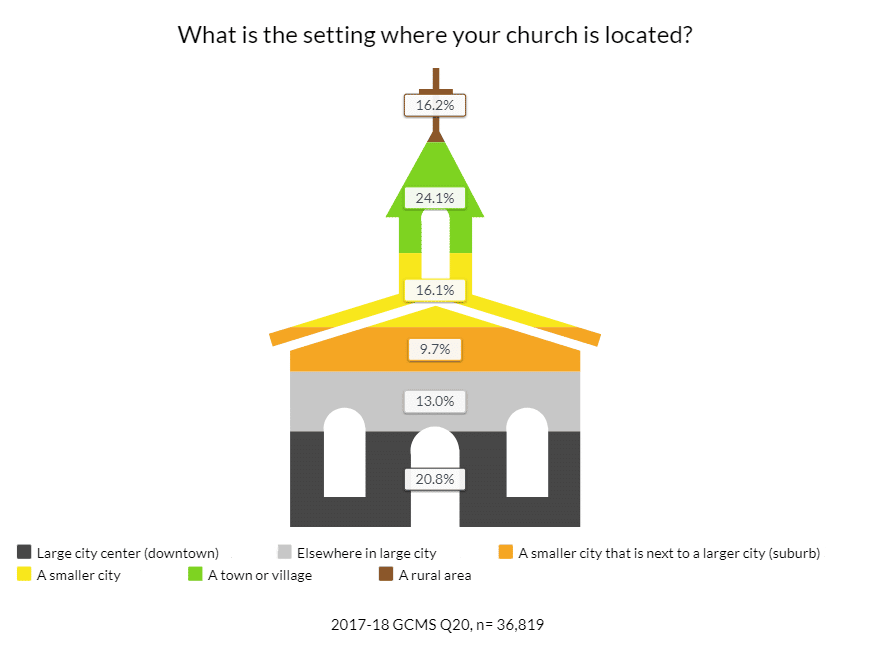
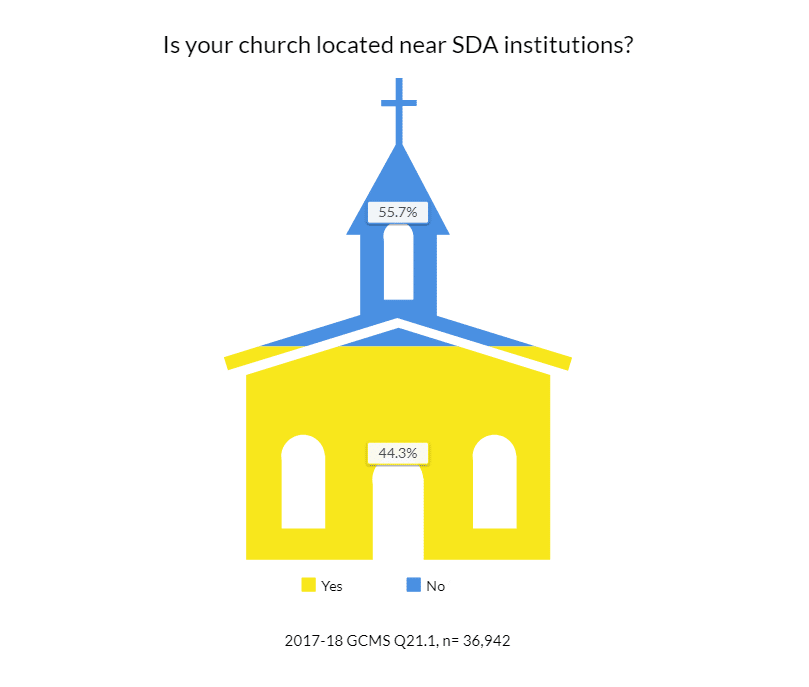
Churches that Plan Activities for Everyone
Participants in the 2017–18 GCMS were asked to respond to the statement, “I attend a church that plans activities for everyone in my family.” When their answers were cross-tabulated by the setting of their local church, churches in rural areas were most likely (67% of participants agreed or strongly agreed) to plan activities for the whole family, followed by churches in suburbs and in a town or village (66% and 63% respectively agreed or strongly agreed). While large cities are typically assumed to be filled with young families with children, it is interesting to note that churches located in large cities were least likely to plan such activities (59% of participants agreed or strongly agreed). This can be due to a larger membership and anonymity that often comes with it in the churches located in cities. This also calls for an increased friendship and a range of age-appropriate activities for Adventists and their family and friends living in big cities.
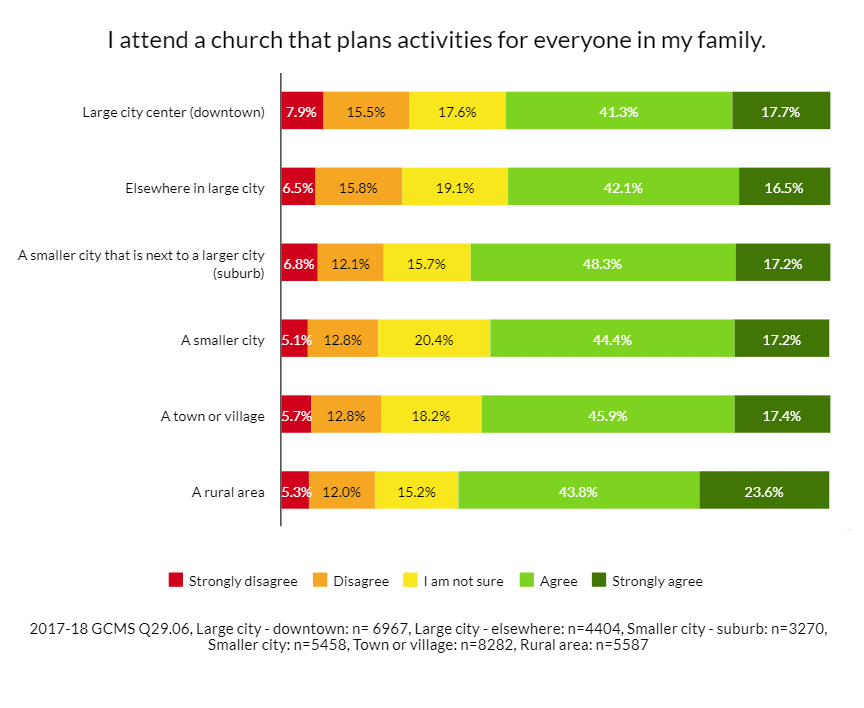
A church’s proximity to an Adventist institution did not appear to make a difference in a church’s propensity to plan activities for everyone in the family.
Helped with a Church Ministry on Sabbath
The 2017–18 GCMS asked respondents how often, in the last year, they had helped with a church ministry on Sabbath. This data was cross-tabulated by the location of their local church. While churches reported similar percentages of involvement—regardless of location—those who attended a church in a city downtown (55%), a suburb (56%), a smaller city (55%), or a rural area (55%) were most likely to have helped with a church ministry on Sabbath, almost every week or more often. Those who attended church elsewhere in a large city were least likely (50%) to have done so almost every week or more often. The data also showed that only about half of the members were involved in church ministries on Sabbath with these frequencies. The challenge to involve another half in more regular ministry is common for all pastors regardless of their church’s location.
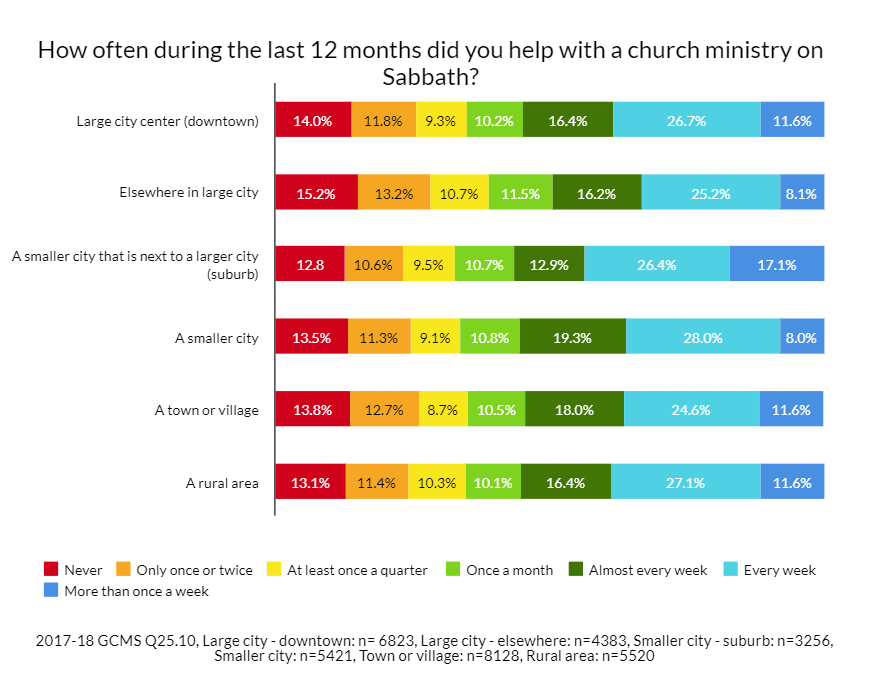
A church’s proximity to an Adventist institution did not appear to make a difference in members’ participation in church ministry on Sabbath.
Helped with a Church Ministry During the Week
The 2017–18 GCMS participants were also asked how often, in the last year, they had helped with a church ministry during the week. Again, this data was cross-tabulated by the location of their local church. Respondents who attended church in a suburban (47%) or rural area (45%) were most likely to have done so almost every week or more often. In churches located in the downtown area, in a smaller city, or in a town or village, about two in five helped with a church ministry during the week almost every week or more often. Those who attended church elsewhere in a large city were least likely (36%) to have helped with a church ministry during the week almost every week or more often.
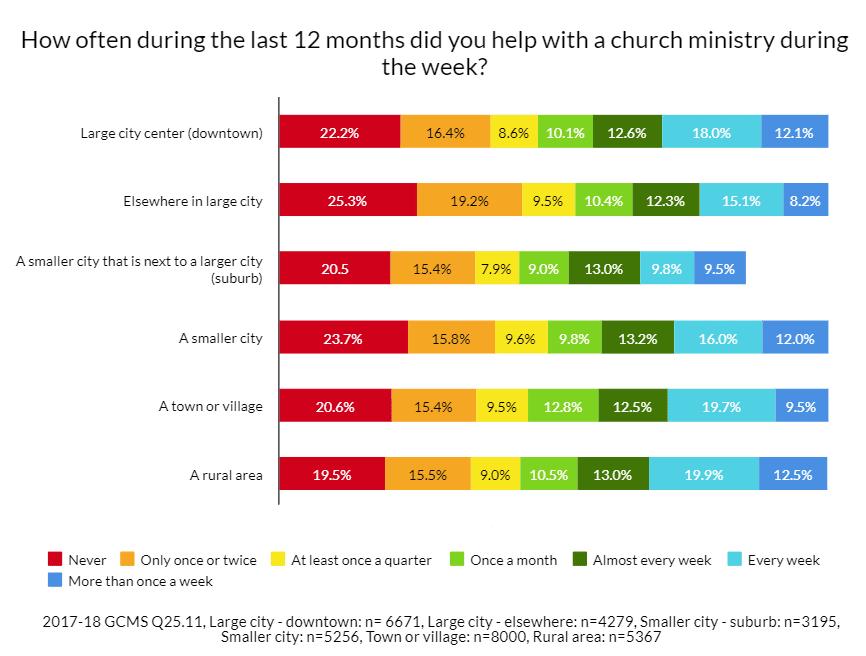
A church’s proximity to an Adventist institution did not appear to make a difference in members’ participation in church ministry during the week.
In this blog, we have looked at some ways that church location impacts church life. While about 60% of the survey participants said they attended the church in urban settings, not all congregations located in cities had the same dynamics, high involvement of members in church ministries, or programs for all ages or social groups. Churches located in large cities were least likely to plan activities for everybody in the families of church members. Churches in rural areas, suburbs, or a town or villages were most likely to do that. Interestingly, members of churches in suburbs or rural areas were most likely to be involved with a church ministry during the week, while members of the congregations located elsewhere in large cities were least likely. Close proximity to an Adventist institution did not impact the lives of nearby congregations much. Regardless of the location, about half of the church members were rarely or never involved in church activities on Sabbath or during the week. Alongside the challenge of the involvement of more members in church ministries in any location, the challenge of revitalizing church life in large cities remains very obvious. How can this be done? Can regular programs for all ages and social groups present in the congregation change its climate? Can this approach make churches in large cities more relevant for urban dwellers? And if you have ever wondered how a church’s location impacts its outreach into the community and involvement with non-Adventists, be sure to read our next blog to find out!
For more research findings on the total sample, please see the Meta-Analysis Report.
Created in collaboration with the Institute of Church Ministry
Published by ASTR on 09-07-2022

